Legendary scout of the Karelian Front
This year marks the 95 anniversary of the birth of Dmitry Semenovich Pokramovich, an infantryman, intelligence officer, Hero of the Soviet Union (1944). It was he who became the organizer of the rescue 2,5 of thousands of residents of Kirkenes, who had taken refuge in a tunnel of an iron-mine, which the German troops planned to blow up. Based on this episode, the film "Under a stone sky" was filmed at 1974 at the Lenfilm studio.
The combat life of this officer is rich in hot fights with the enemy, in daring raids to the rear of the enemy in the wild and harsh mountains of the Arctic. From the very first days of the Great Patriotic War, D.S. Pokramovich is in the army on the Karelian front. The senior commanders quickly noticed in the young fighter the qualities the commander needed. In September 1941, he was appointed as a squad leader. Trust Dmitry Semenovich justified. His unit was not once distinguished in battles. Three months later, another promotion followed. 1 January 1942, replacing the commander who died in battle, Dmitry took command of the reconnaissance platoon. Soon he was given a military rank - junior lieutenant. The first steps of the young platoon commander were difficult. The unit on the eve replenished with young fighters. Many of them had no combat experience. The conditions of the Polar region turned out to be new for them.
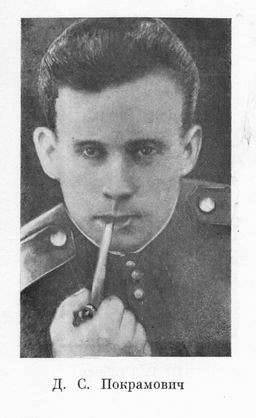
This was reflected in the combat affairs. Scouts could not, for example, take a long time "language". It seemed that everything had been provided for: for several days, the object of the attack was monitored, as if the enemy’s firing points were traced, a route was carefully laid, but there was no luck. And the reason was quite different: some scouts could not crawl secretly across the terrain, dragging out the movement. Awkwardly cut wire, an unsuccessful fit of equipment, inept handling of mines showed the appearance of scouts, and the enemy managed to take countermeasures.
Things improved when combat training was adjusted. On a well-equipped training field, the scouts spent dozens of classes, the commander demanded that the fighters move covertly, mask themselves well, show determination in any situation, and strive to fulfill the order at any cost. Careful and serious preparation brought success. The division of Pokramovich acted more and more confidently and skillfully. For example, the 11 June 1943 of the year was successfully conducted, for example, in order to destroy the enemy stronghold located at anonymous height in 15 km south-west of the village of Great Western Persons, and to capture the “language”.
Preparing for it, Pokramovich and his subordinates under the leadership of the commander of the 35 separate reconnaissance company 14 of the rifle division of the senior lieutenant G.M. Town Hall, for several days, watched the enemy. The scouts established the location of the enemy firing points and the direction of fire, determined the nature of the barriers in front of the front edge of the defense, the ways of approach and exit to the German positions, studied the order of changing sentries. Interaction with supporting subunits was organized, call signals, transfer and cease-fire of artillery, heavy machine guns and light machine guns were installed. To conduct a search, we created 3 groups: capture, cover and support. The capture group selected the most decisive and physically strong scouts. All fighters were armed with machine guns, grenades and daggers. On the terrain, similar to the area of the forthcoming actions, the scouts worked for several days for interaction between the groups, overcoming obstacles and obstacles, escaping and escorting prisoners, carrying the wounded and ensuring the withdrawal. Serious attention was paid to the preparation and fitting of camouflage suits. Moss, grass, small branches were sewn onto the fabric. Special stockings were tied onto the shoes. Weapon wrapped with motley fabric. In such a suit, the scout merged with the terrain, and it was difficult to notice him even at close range.
In the first half of the day, when the sun blinded the enemy observers, the scouts moved forward to the enemy's trench. Ahead - groups of capture and support. Behind them - cover. The fighters took the line in 200 m from the enemy and established observation of the area of action. Then they crept to the wire fence, imperceptibly made passages in them. The methodical artillery-mortar and machine-gun fire of our units in the reconnaissance action area contributed to the secretive advance of the scouts. When 10-15 m was left before the enemy trench, Pokramovich gave the command: “Forward!”. A short, rapid throw scouts broke into the trench. In a short-range hand-to-hand combat, several fascists were destroyed. Immediately after that, the fighters headed by Pokramovich took the prisoner and headed for their positions. The support team under the command of Sergeant G.I. Lykova began to move along the trench to the right, destroying the enemy. She threw grenades pillboxes, several machine-gun points and a company dugout. In the meantime, the cover group suppressed the enemy with an automatic fire to the left of the capture group. At the same time, our artillery, mortars and machine guns opened heavy fire on trenches, fire points and the NP of the fascists, not allowing them to oppose.
Careful preparation of the search, surprise and swiftness ensured success: on this day, Pokramovich's subordinates destroyed 9 enemy soldiers and 5 firing points, destroyed an artillery observation post, captured trophies, valuable documents and a prisoner. There was no loss on our part. Soon the first award appeared on Dmitry Pokramovich’s chest - the Order of the Red Banner. And in the following days his scouts skillfully fought with the enemy. 3 August 1943, they smashed another strong point. At the same time, soldiers and officers were destroyed before 30, 3 firing points, a warehouse, 2 dugouts were blown up, valuable documents confirming the enemy grouping, and a control prisoner were seized. During the battle, Pokramovich wounded, but he continued to control the platoon, skillfully organized the withdrawal and completely evacuated the wounded to the location of his unit. Successful search actions and the personal prowess of the officer were marked by the second Order of the Red Banner. In December, 1943 was promoted to the position of commander of the 35 th separate reconnaissance company of the 14 th rifle division.
At the beginning of February, 1944 of the year, due to increased activity and increased enemy movement along the roads in the area of the 14 Infantry Division, it was necessary to capture the composition of his groupings and plans by capturing prisoners and documents. This task is the chief of staff of the division, Lieutenant Colonel V.I. Tarasov put the senior lieutenant Pokramovich.
12 February 1944, after careful preliminary preparation, the reconnaissance team commanded by Pokramovich acted on a combat mission to a strongly fortified enemy platoon strong point at an altitude of 12 km southeast of the village of Bolshaya Zapadnaya Litsa. Skillfully placing his subordinates on the starting line, the company commander attacked a strong point from the rear and from the right flank. Caught unawares, the Germans could not provide organized resistance and, after suffering heavy losses, left the height.
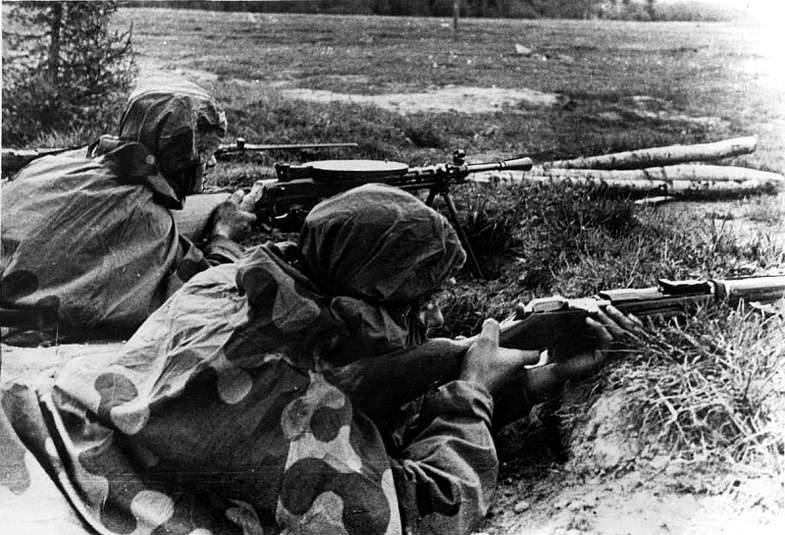
During the battle, two enemy groups from other strongholds, by force of each platoon, tried to counterattack reconnaissance aircraft. Senior Lieutenant Pokramovich summoned artillery and mortar fire on the fascists. Enemy onslaught was repulsed. The reconnaissance detachment returned safely to the location of the division. Having lost one person killed, our soldiers destroyed the enemy soldiers and officers before 50, and took four prisoners, besides they blew up 3 dugouts, 3 bunker, 2 mortars, a warehouse, a compressor station, seized easel and light machine guns and valuable documents.
For the skillful leadership of the unit’s actions in the destruction of a strongly fortified enemy stronghold and the capture of prisoners, a clear organization of interaction with supporting artillery means, senior lieutenant Pokramovich was awarded the Order of Alexander Nevsky. Slava Dmitry Pokramovich and his subordinates grew. On their combat exploits reported frontline print. The officer repeatedly spoke to the commanders of intelligence units, shared his experience.
During the Petsamo-Kirkenes operation, the talent of a reconnaissance commander manifested itself most clearly. Acting on the enemy’s rear, Pokramovich and his subordinates promptly opened up the enemy’s grouping, revealed its defense system, smashed the rear garrisons. In the battles on the approaches to Petsamo, the company cut the road Titovka Reka - Petsamo, as a result of which the Germans lost their way to withdraw troops and remove military equipment.
When attacking the city of Kirkenes, Pokramovich at the head of a company penetrated the battle formations of enemy advance units and attacked a strong point. As a result, up to a company of soldiers was destroyed, 5 machine guns, a powerful radio station and other military equipment were captured. October 24, acting ahead of the advancing units, the division of Pokramovich reached the Bekfjord Bay and began to force it under artillery fire. Boarded by boats, the scouts took the direction to the port of Kirkenes. The Nazis discovered them and opened fire. Direct hit by a projectile one boat was broken. But the rest continued to move to the port. The first to land on the pier were fighters junior lieutenant GI. Lykov, he had already become an officer, commanded a platoon. Wet, half-frozen fighters rushed forward. The main forces of the company joined them. By 2 hours of the night, the scouts, smashing the enemy with grenades and machine-gun fire, occupied the port, which contributed to the division of the division in mastering the city.
And the next day, Pokramovich and his subordinates performed one of their brightest feats. On October 26, they received orders to reconnoiter the coast and the hills adjacent to it west of Kirkenes. With a group of scouts as part of 20, Dmitry Semenovich, a man, spoke out on the task. Under the cover of thick fog, having broken up into 2 groups, the scouts moved west: one - on boats, the other - along the coast, on foot. In the evening, having passed about 20 km, the fighters made a halt.
Scouts Sergeant N.A. Balandin and corporal I.D. Kondratiev, sent to patrol, located about two hundred meters on top of the hill near the coast of the fjord. About an hour later, through a haze of mist, the men saw the silhouette of a ship, from which fragments of German speech could be heard. Enemy ship moored to the shore.
Pokramovich decided to seize the ship. He ordered Junior Lieutenant G.I. Lykov with 12 scouts on boats to sail to the ship, and Lieutenant N.I. Zhdanov with the remaining fighters secretly move forward to the shore and lie down on the cliff where the ship landed. Then, according to the general signal, to throw a ship with grenades, fire from machine guns and capture. The commander himself went with the first group.
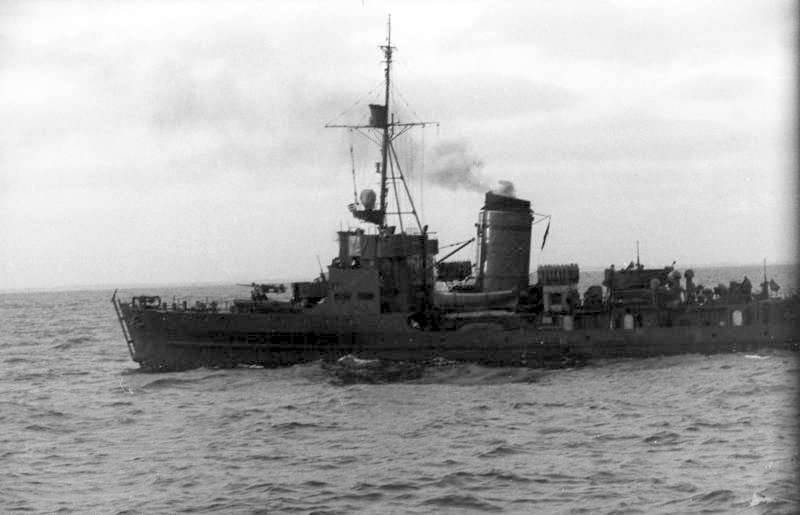
Without losing time, the scouts lowered the boats into the water. The little force melted in the fog. Remaining on land lay down on a cliff near the ship. The boats slowly cut the calm water of the fjord. The scouts stared hard ahead. Finally, through the fog, the outline of the ship appeared. At the command of Pokramovich, the boats dispersed. They had to approach the ship from different sides, creating the appearance of the environment. When it was less than 10 m, a red rocket flew into the air. It was a signal to attack. Machine gunfire rang out. Grenades flew to the deck. At the same time from the cliff on the fascists struck a group of Lieutenant Zhdanov. On the ship began to panic. The Nazis initially tried to resist. Soviet fighters intensified the fire. A few minutes later a white flag appeared from the hold.
The scouts quickly descended to the deck, disarmed the crew and, after disembarking them, landed him on the deck, sent them to the location of their troops. On the ship, it was a minesweeper with a displacement of 800 t, Pokramovich remained with ten fighters.
The clock flowed slowly. At midnight I heard the noise of the engine. This was approaching the boat. The scouts spread out along the deck. To show that a normal life is going on the ship, one of the soldiers rumbles with an anchor chain. The boat came close to the minesweeper. The captain shouted something in German.
In response, grenades flew. Then our fighters jumped over the side onto the deck of the boat. In a short melee they slaughtered the whole team. The radio operator was the last to be destroyed. However, he apparently managed to pass on the attack to his warships. The scouts discovered the Kingston. A few minutes later the boat disappeared into the depths of the sea.
A few more hours passed. By dawn the fog had cleared. Visibility is better. And then the fighters discovered that an enemy gunboat was approaching them. The forces were unequal. Pokramovich ordered his subordinates to quietly leave the minesweeper and lie down near the boulders nearby. "Let the Nazis themselves destroy their ship," - he decided.
And really. Approaching about four hundred meters, the gunboat opened fire. The Nazis beat fiercely. Several shells fell into the hold of the minesweeper, where the ammunition. There was a strong explosion. A huge glow rose over the fjord. Meanwhile, the scouts were already retreating to their division.
A few days later, colleagues congratulated the brave commander of the scouts with a joyful event. By a decree of the Presidium of the Supreme Soviet of the USSR from November 2 1944, he was awarded the title Hero of the Soviet Union. Dmitry Semenovich Pokramovich died in the battle for the liberation of the German city of Rostock. There he was buried. Later reburied at the memorial cemetery of Soviet soldiers in Gdansk.
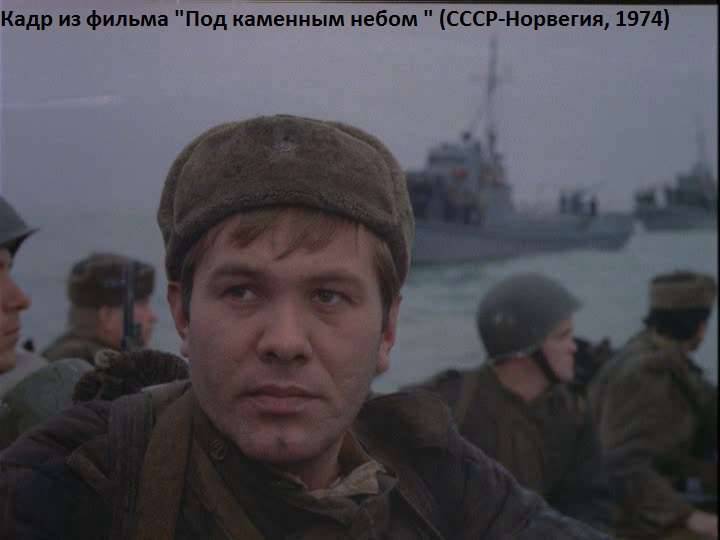
Sources:
Sorokazhardyev V. They fought in the Arctic: Heroes of the Soviet Union, 1939-1945. Murmansk: Murmansk Book Publishing House, 2007. C. 198-199.
Arsenyev A. Pskovichi - Heroes of the Soviet Union L .: Lenizdat, 1983. - C. 221-223
Leontiev S. The brave scout of the Arctic. // Militaryhistorical magazine. 1975. No. 11. S. 47-50
Gardin E. Glory to the Heroes of the Motherland! Petrozavodsk: Karelian book publishing house, 1985. 178-179.
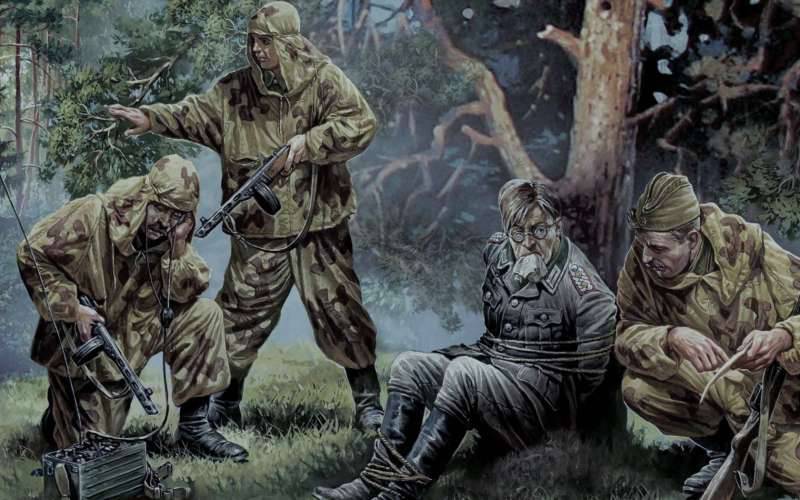
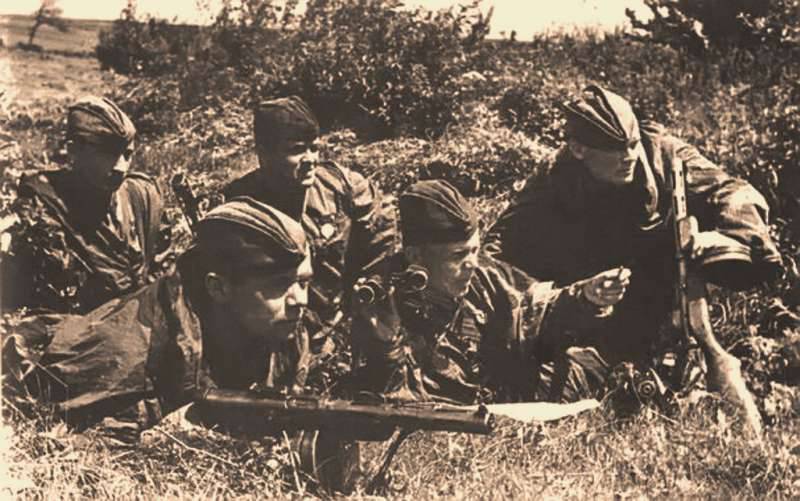
Information